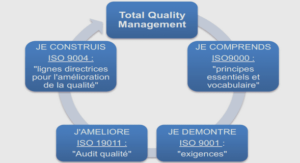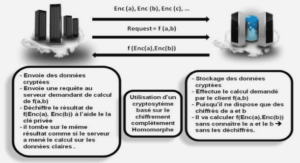Activities that create amusement in the classroom
The question is to find out students’ view about fun activities and to check if their view relate to teachers’ view. The answers of the students from the questionnaire reveals to us that most of the students; that is, two hundred and fifty two (252) or sixty four point twenty eight percent (64, 28%) perceive fun activities as enjoyable activities to motivate students to learn. One hundred and one students out of three hundred and ninety two students (101/392) or twenty five point seventy six percent (25, 76%) answered that fun activities are activities that create amusement in the classroom. Thirty nine(39/392) of the students; that represents nine point ninety four percent (9,94%) of the students think that fun activities are activities that create laughter while learning. As such, Most of the teachers and students have the same view as far as fun activities are concerned.
Does your teacher teach you speaking?
(Put a tick in the square) □ Yes □ No With this question we want to know whether students are given the opportunity to develop their speaking skill in class or not. 0,00% 10,00% 20,00% 30,00% 40,00% 50,00% 60,00% 70,00% Activities that create laughter while learning Enjoyable activities to motivate students to learn Activities that create amusement in the classroom Students’ definition of fun activities percentage 9,94% 64,28% 25,76% Graph 2 46 The students’ answers from this question enable us to know that teachers do not neglect the teaching of speaking as ninety two point eighty five percent (92,85%) answered ‘Yes’ and only seven point fourteen percent (7,14%) of the learners answered ‘No’.
If ‘Yes’, which of these fun activities does your teacher use?
(Please put a cross in the chart) Fun activities Never Rarely Sometimes often Always Role-play Discussion Games Information gap(Completing information) Story telling Songs Humorous devices(jokes, riddles) Our main objective in asking this question is to discover the frequency and the activity that teachers most use and also to find out which activity they are less familiar with . 92,85% 7,14% Speaking session in class Yes No Diagram 9 47 Fun activities Never Rarely Sometimes often Always Role-play 6,63% 27,80% 16,83% 13,01% 35,71% Discussion 5,86% 10,45% 28,82% 17,85% 36,98% Games 52,55% 18,36% 19,64% 6,37% 3,06% Information gap(Completing information) 13,77% 14,28% 18,36% 19,89% 33,67% Story telling 43,62% 24,23% 19,89% 7,65% 4,59% Songs 58,16% 19,64% 8,41% 4,84% 8,92% Humorous devices(jokes, riddles) 37,75% 18,11% 14,03% 16,07% 14,03% Chart 8 : Frequency of using fun activities in class. Considering the result that we had, discussion is the fun activity that students always deal with as thirty six point ninety eight percent (36, 98%) of their teachers use it. The second fun activity that their teachers always use is role play as thirty five point seventy one percent (35,71%) of the students mentioned their teachers always use it. Thirty three point sixty seven percent (33, 67%) of the students mentioned that their teachers always use Information gap activity. Humorous devices are also other fun activities that teachers always use; still according to the students, fourteen point three percent (14, 03%) of the students answered that their teachers use humorous devices. The students also claimed that their teachers use the other fun activities but the frequency of using them is different: eight point ninety percent (8, 92%) of the teachers always use songs, four point fifty nine percent (4, 59%) of the teachers always deal with storytelling, and only three point six percent (3, 06%) of the students answered that their teachers always use games. As such, discussion and role- play are the fun activities that teachers most use and games are the least use. Question n°5 : Do you enjoy the use of ‘fun activities’ in class? This question is meant to ask whether students like the use of fun activities in class or not. 48 Most of the students; that is, ninety four point thirteen percent of the students (94, 13%) answered that they enjoy the use of fun activities in class and only five point eighty six percent (5, 86%) of them answered ‘No’ to the question. We could then conclude that fun activities interest students’ attention and they can be used to motivate them to learn English; especially, to speak the target language. Question n°6 : Do you think they improve your speaking skill? □ Yes □ Maybe □ No As the main goal of this present study is to develop learners’ speaking skill, we think that this question is asked to check students’ feeling when using fun activities. 94,13% 5,86% Students’view of fun activities in class Yes No 69,64% 26,27% 4,08% Fun activities improving students’speaking skills Yes Maybe No Diagram 10 Diagram 11 49 As a result, most of the students; that is, sixty nine point sixty four percent (69, 64%) of the students think that fun activities improve their speaking skill. Still with that question, twenty six point twenty seven percent (26, 27%) of the students answered ‘Maybe’ and four point eight percent (4, 08%) of the students answered ‘No’. Question n°7: If ‘Yes’ in what ways?(Please rank from the most important reason n°1 to the least important reason n°3) …..:A) It motivates me to speak because it relieves my shyness. …..:B) It gives me opportunity to speak the language in a more natural way. …..:C) It exposes me to an ordinary situation and induces me to participate in class. Other(s) (Please write in the blank if you have other answers) …………………………………………………………………………………………………… This sub question aims at knowing how exactly fun activities affect students’ motivation to speak or to participate in class. The following chart will show us the students’ answers. Rank 1 2 3 A 18,30% 40,52% 41, 17% B 58,82% 17,97% 23,20% C 22,87% 41,50% 35,62% Chart 9 : Advantages of fun activities in students’ use of the target language As we could notice from the students’ answers, most of the students (58, 82%) chose the second option; that is, fun activities give students opportunity to speak the language in a more natural way. It is then followed by the third option (22, 87%); that means, fun activities expose them to an ordinary situation and induces them to participate in class. Eighteen point thirty percent of the students (18, 30%) put the first option in the third place; that is, fun activities motivate them to speak because they relieve them in their shyness. It is worth noting that three hundred and six out of three hundred and ninety two of the students (306/392) answered ‘Yes’. After answering this question, some students (23/306) or seven point fifty one percent (7, 51%) gave other answers to show us in what ways exactly fun activities improve their speaking skill. 50 After reading the students’ answers, we noticed that most of the students are worried about their future either it is about their studies, about their future career or about their life in general. They answered that it gives them the opportunity to prepare their studies at the university. Other students mention that fun activities are necessary for their future job as nowadays English is an international language. Some others claim that fun activities help them to speak English fluently and also help them to have correct pronunciation. Last but not least, some students mention that when they go abroad, they will be able to speak with a foreigner and they will know cooking in English. Therefore, they believe that fun activities can improve their communication skill, in other words, their speaking skill.





